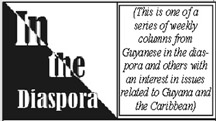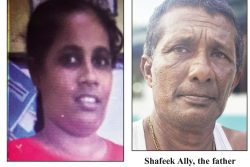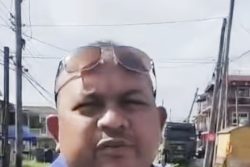By Filiberto Penados
This article draws from a presentation made at the World Youth Forum in Belize on November 8th, 2017.
Dr. Filiberto Penados a Yucatec Maya from Belize,
is an indigenous studies and education scholar at the Center for Engaged Learning Abroad. He is president of the Julian Cho Society and a member of the technical committee of the Maya Leaders Alliance and Toledo Alcalde Association
 I want to address the theme of empowerment of Indigenous Peoples. In the process of constructing a sustainable world what is needed is a space for mutual learning and empowerment. Too often the notion of empowerment suggests that there is someone doing the empowerment from some point above, and therefore those to be empowered have very little if anything to contribute. This is the very notion I want to challenge, for it fails to recognize that those who we are presumably empowering might also have something to teach us and closes the possibility that we the empowerers might also need to be empowered. I do not want to minimize the fact that indigenous peoples are marginalized but rather emphasize the point that they are not mere objects to be saved, and that that there are powerful lessons to be drawn from indigenous struggles and ways of knowing and being.
I want to address the theme of empowerment of Indigenous Peoples. In the process of constructing a sustainable world what is needed is a space for mutual learning and empowerment. Too often the notion of empowerment suggests that there is someone doing the empowerment from some point above, and therefore those to be empowered have very little if anything to contribute. This is the very notion I want to challenge, for it fails to recognize that those who we are presumably empowering might also have something to teach us and closes the possibility that we the empowerers might also need to be empowered. I do not want to minimize the fact that indigenous peoples are marginalized but rather emphasize the point that they are not mere objects to be saved, and that that there are powerful lessons to be drawn from indigenous struggles and ways of knowing and being.
To open the possibilities for mutual empowerment, it is important to examine how indigenous peoples tend to be seen, for how we see people shapes how we relate to them and whether we are open to learning from them.
There are at least 4 ways in which we tend to see indigeous peoples.
The first, Indigenous peoples as invisible: The idea that “there are no indigenous peoples here”. While globally there is a major trend to recognize the presence of indigenous peoples and a move to recognize and affirm their human rights, the same cannot be said for many national contexts. At the country level, where recognition ultimately matters, the existence or legitimate existence is many times denied. The denial of the existence of indigenous peoples in a given country is a non-starter for a mutually empowering space.
The second, Indigenous peoples are poor and passive victims who need to be saved. Often that means saved from their culture which is presumably backward and the cause of their poverty and therefore with little to learn from. This is also often accompanied by an understanding of poverty that does not take into account the historical processes that produced it nor the present power complex that sustains and deepens it.
The third – Indigenous peoples are quaint remnants of the past. Often we see this in the tourism industry that promotes indigenous culture and exploits it with little benefit to indigenous peoples. More importantly, it essentializes indigenous peoples and expects them not to change and ultimately robs them of their dignity and human agency.
The fourth – Indigenous peoples are irrational obstructionists. The notion that “they are on the wrong side of history”, that “they are balkanizing this country”, “they are opposed development” or “they want special rights”. This view of indigenous peoples always comes up when they claim rights that challenge dominant ways of thinking and practices such as when they demand collective rights to lands and resources . It comes up precisely when indigenous peoples engage in actions to empower themselves. Then mainstream society becomes scared and accuses them of being irrational.
So how might we look at indigenous peoples?
To begin with we must recognize that indigenous peoples are diverse. Prior to 1492 for example, there were no indigenous peoples. There were many different peoples, with their own language, world view, way of knowing and being in the world; with a variety of ways of being human.
Secondly, indigenous peoples are complex social and historical actors. Prior to colonization they had developed complex societies framed by their own world view and sustained by their own lands and resources, systems of knowledge, systems of governance and economy. These societies were destroyed by a colonial process that was underpinned by a power complex that still persists.
As complex, social actors, indigenous peoples are engaged with the challenges of the unsustainable present. They are engaged in efforts to construct a sustainable world by overcoming the legacy of colonialism, through a process of revitalizing their communities, their ways of knowing and being while inventing new routes to meet the challenges of the present and dreaming alternative futures.
Here are 3 examples:
Land Rights – Like many Indigenous peoples around the world the Maya people in Southern Belize have been engaged in efforts to secure their rights to land. After more than twenty years of organizing themselves, of being denied these rights by the Governments of Belize and dragged through all the court levels this struggle culminated in a Caribbean Court of Justice Order that has affirmed their rights to land. This demand for land was many times portrayed as unfounded, irrational, divisive and even as an attack on the rights of the rest of Belizeans. After all the argument goes, these lands and resources should be available for the “development” of all Belize. However this is a development process that has rendered Maya people in the margins reporting up to 80% level of poverty. Once again the mainstream proposal is to sacrifice indigenous wellbeing, lands and resources on the altar of the interests of dominant society and unsustainable development.
The struggle for land rights of Maya people however is not just some frivolous demand for real estate and a piece of the pie. It is a struggle for indigenous wellbeing certainly, but also for a transformation of society in which the wellbeing of all matter.
As one of the leaders states:
Land rights means survival, without it we risk becoming extremely impoverished and go hungry. The less we produce our own food, the less we eat traditional foods …it changes our relationship with the land. The (erosion of the) relationship with the land is related to social dysfunction.”
Asked why people dream of and often go back home after spending years in town, he says:
“This (land) is the only place where I feel complete…here I will not die…where I don’t feel inferior… here I will not go hungry”
When talking about land they are not talking about land as just space or real estate – something you can buy and sell. They are talking about land as the source of sustenance, about land as yokolcab, the word for earth in Mopan and Yucatec Maya which literally means on top of honey. Without yokolcab we indeed run the risk of going hungry whether we are talking about a specific Maya community in their own land or globally on the planet.
When Maya people are talking about land they are talking about a reciprocal relationship with the land captured in the notion of raalchoch (people of land) and the kind of society, governance and economy that it gives rise to. They are talking about junahil and comonil, expressed in collective forms of work, consensus decision making and an economy of reciprocity. They are talking about Jolomil kalebal comolbe, the traditional leadership and governance that has sustained land and community. A form of leadership that is about facilitating right relations, conflict resolution and consensus decision making. They are talking about abink as the space for community decision and makink, the word for meeting that literally means to listen.
Is this struggle not a struggle for empowerment, a struggle to participate in the creation of a more equitable and sustainable world? But these alternative ways of knowing and being challenge mainstream dominant thinking and here the state chokes. It finds it hard to make space for an empowered indigenous peoples. It finds it hard to move away from colonial attitudes that have seen indigenous labour, land and resources as there for the taking.
Indigenous development: Indigenous peoples around the world are challenging conventional development thinking and inventing new concepts in the process. In the case of South America for example indigenous peoples talk about suma kawsay and suma kamana, the notion of living well in community.
The Maya people in Belize are engaged in a similar process. Post the Caribbean Court of Justice order, they are asking what next? What shall be the collective dream for our lands, families and communities and how shall we get there? How shall we re-root and re-route our systems and institutions to achieve the wellbeing of our lands and our people. In this process they are beginning to articulate a vision in which they see themselves as raalchoch, hardworking, united people, living peacefully and well by sustaining their culture, being open to other cultural horizons and caring for, sustaining and using their lands and resources.
Indigenous Education: In 2001 the Maya people established the Tumul K’in Center of Learning. Tumul Kin means ‘new day’ in the Mopan language and it was chosen for what it means to signal a new way of thinking about education. Tumul K’in sought to provide an education that was based on indigenous knowledge but opened windows for other ways of knowing, and to respond to Maya dreams and aspirations. It adopted a pedagogical practice that incorporated Maya knowledge, Maya knowledge bearers; sought to transform the physical and social school space such that it reflected Maya identity; and adopted a form of governance that was inclusive of parents, children and community in shaping the kind of education that they desired for their children.
This picture, from the first graduation ceremony, is worth a thousand words in describing the indigenous perspective. At the centre is a young man graduating in a toga. I always ask: what can be more western than that? However this is interrupted by a traditionally woven sash. Just behind the student is another young man with a red bandana, a young spiritual guide conducting a cleansing ceremony as part of the graduation. A little bit behind is the school principal, in her traditional wear. All of this is happening on the land, in the open and bare ground, and the young student is surrounded by the community leaders and parents. Finally, above is hanging the Belizean flag. This picture challenges to think of education in non-conventional way, in an intercultural way. It challenges us to see indigenous peoples as inventive social actors engaged with the present and in dreaming and labouring to produce a better future.
But I want to emphasize the Belizean flag hanging from above. Indigenous peoples seem to be saying, not that we want to break this country or society apart but rather we want to be a part of it and we want to transform it. We want to transform it such that it is more inclusive.
Indigenous empowerment, then, is not about saving indigenous peoples. We are not passive objects with quaint cultures or irrational obstructionists. Neither are we perfect, living in perfect harmony with land and each other. Nor do we have all the answers. We are complex, intentional social actors engaged with the present, labouring to produce a more equitable and sustainable world. Indigenous empowerment is about making space for indigenous ways of knowing and doing. Nor is it only about how indigenous peoples might be empowered but also about how mainstream dominant society might be empowered by and learn from indigenous peoples. It is about creating space of mutual empowerment in which these indigenous efforts would not only have a place but be supported and learned from. In effect it is, in the words of the Zapitastas, about creating “a world in which many worlds can fit”.










